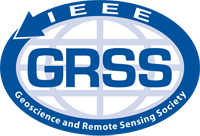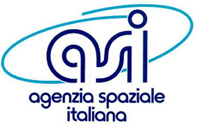HD-06: Inverse Problems in Hyperspectral Imaging: Denoising, Fusion, and Compressive Acquisition
Jos'e Bioucas-Dias
Sunday, July 26
13:30 - 17:30
Abstract:
In hyperspectral imaging, the sensors measure the electromagnetic energy scattered in their instantaneous field view in hundreds or thousands of spectral channels. The very high spectral resolution of hyperspectral images enables a precise identification of the sensed materials via spectroscopic analysis, facilitating countless applications; e.g., earth observation and remote sensing, food safety, pharmaceutical process monitoring and quality control, as well as biomedical, industrial, and forensic applications. The extraction of useful information from hyperspectral images calls for sophisticated inference methods. The sources of difficulties are, namely, the high dimensionality and size of hyperspectral data, spectral mixing (linear and nonlinear), low spatial resolution (there is a trade-off between spectral and spatial resolution), and other degradations, such as noise and atmospheric effects. The tackling of these difficulties corresponds to a suite of inverse problems that are currently on the research agenda, namely hyperspectral unmixing, denoising, super-resolution and fusion, compressive acquisition, segmentation, and classification.
This tutorial is focused on three hyperspectral imaging inverse problems: denoising, fusion, and compressive acquisition. Although these three problems are different in their details, they share a common objective: to restore original images from degraded versions. In denoising and fusion, the degradation is due to noise, blur, and downsampling. In compressive acquisition, the measurements are obtained via compressive measurements, which can also be interpreted as a degraded version of the original data. For each inverse problem, the underlying mathematical problem is formulated and the available solutions, ranging from the classical to the state-of-the-art, are summarized and compared. Below, we provide information about the topics addressed on each inverse problem.
Image Denoising
Denoising is one of the oldest and simplest (at least to state) inverse problems that continues to attract the attention of many researchers. In hyperspectral applications, as in many other imaging modalities, the main sources of noise are the electronic equipment and the Poissonian fluctuations resulting from the photon counting process. In addition, there are other sources of noise related with malfunctions of the sensors yielding, namely, corrupted pixels and drop-out artifacts.
The first hour of the tutorial is devoted to hyperspectral image denoising and the outline is as follows:
1) Types of noise: additive, multiplicative, and other (corrupted pixels, drop-out artifacts)
2) Band-based denoising
3) Spectral-based denoising
4) 3D-based methods
5) Patch-based methods
6) Examples with real and simulated data
Hyperspectral Image Fusion
For a fixed signal-to-noise, the area coverage rate of an airborne or spaceborne imaging sensor is proportional to the forth power of the spatial resolution and inversely proportional to the square of the number of bands. This design tradeoff often determines a low spatial resolution of the hyperspectral imaging sensors, as they have a large number of spectral bands. Hyperspectral image fusion aims at recovering a higher spatial resolution by taking advantage of the availability of multispectral and/or panchromatic images of the same area, which have complementary resolution characteristics; that is, they have low spectral resolution and high spatial resolution.
The second hour of the tutorial is devoted to hyperspectral image fusion and is organized as follows:
1) Observation models for hyperspectral, multispectral, and panchromatic imaging
2) Formulation of the hyperspectral image fusion inverse problem
3) Component substitution and multiresolution analysis methods
4) Matrix factorization methods
5) Bayesian and variational methods
6) Examples with real and simulated data
Compressive Acquisition
In compressive hyperspectral imaging, the acquisition and the data compression are implemented simultaneously by computing a number of projections, termed measurements, of the original data onto a set of predesigned vectors. Assuming that the original data admits a sparse representation on a given basis or frame, it can be recovered from the projections by solving a suitable optimization problem. Compressive hyperspectral imaging is of paramount importance in spaceborne systems, due to the extremely large volumes of data collected by the imaging spectrometers onboard satellites, and the low bandwidth of the connections between them and the ground stations.
The success of compressive hyperspectral imaging stems from the very high spectral and spatial correlation of this type of data, meaning that it is compressible, i.e., it admits a representation on a given frame on which most of the coefficients are small and, thus, it is well approximated by sparse representations. Due to the huge number of optimization variables involved in a typical compressive hyperspectral imaging problem (values between 10^8 and 10^10 are usual), the solutions of these optimization problems are very demanding from the computational point of view. To make the problem even more challenging, the sparse representations are not known beforehand and have to be learned from the measurements.
The third hour of the tutorial is devoted to compressive hyperspectral imaging and is organized as follows:
1) The compressive hyperspectral imaging problem
2) Measurement strategies
3) Sparse representations of hyperspectral images
4) The inference of the original image
5) Recovery guaranties
6) Examples with real and simulated data"
Biography:
Jos'e Bioucas-Dias(S'87, M'95) received the EE, MSc, PhD, and ``Agregado" degrees in electrical and computer engineering from Instituto Superior T'ecnico (IST), the engineering school of the Technical University of Lisbon (TULisbon), Portugal, in 1985, 1991, 1995, and 2007, respectively. Since 1995, he has been with the Department of Electrical and Computer Engineering, IST, where he was an Assistant Professor from 1995 to 2007 and an Associate Professor since 2007. Since 1993, he is also a Senior Researcher with the Pattern and Image Analysis group of the Instituto de Telecomunicaoes, which is a private non-profit research institution. His research interests include inverse problems, signal and image processing, pattern recognition, optimization, and remote sensing. Dr. Bioucas-Dias has authored or co-authored more than 250 scientific publications including more than 70 journal papers (48 of which published in IEEE journals) and 180 peer-reviewed international conference papers and book chapters. Dr. Bioucas-Dias was an Associate Editor for the IEEE TCS (1997-2000) and he is an Associate Editor for the IEEE Transactions on IP and IEEE TGRS. He was a Guest Editor of IEEE TGRS for the Special Issue on Spectral Unmixing of Remotely Sensed Data, of IEEE JSTARS for the Special Issue on Hyperspectral Image and Signal Processing, of IEEE SPM for the Special Issue on Signal and Image Processing in Hyperspectral Remote Sensing, of IEEE STSP for the Advances in Hyperspectral Data Processing and Analysis, and of the IEEE GRSM for the Special Issue on Advances in Machine Learning for Remote Sensing and Geosciences. He was the General Co-Chair of the 3rd IEEE GRSS Workshop on Hyperspectral Image and Signal Processing, Evolution in Remote sensing (WHISPERS'2011) and has been a member of program/technical committees of several international conferences.




